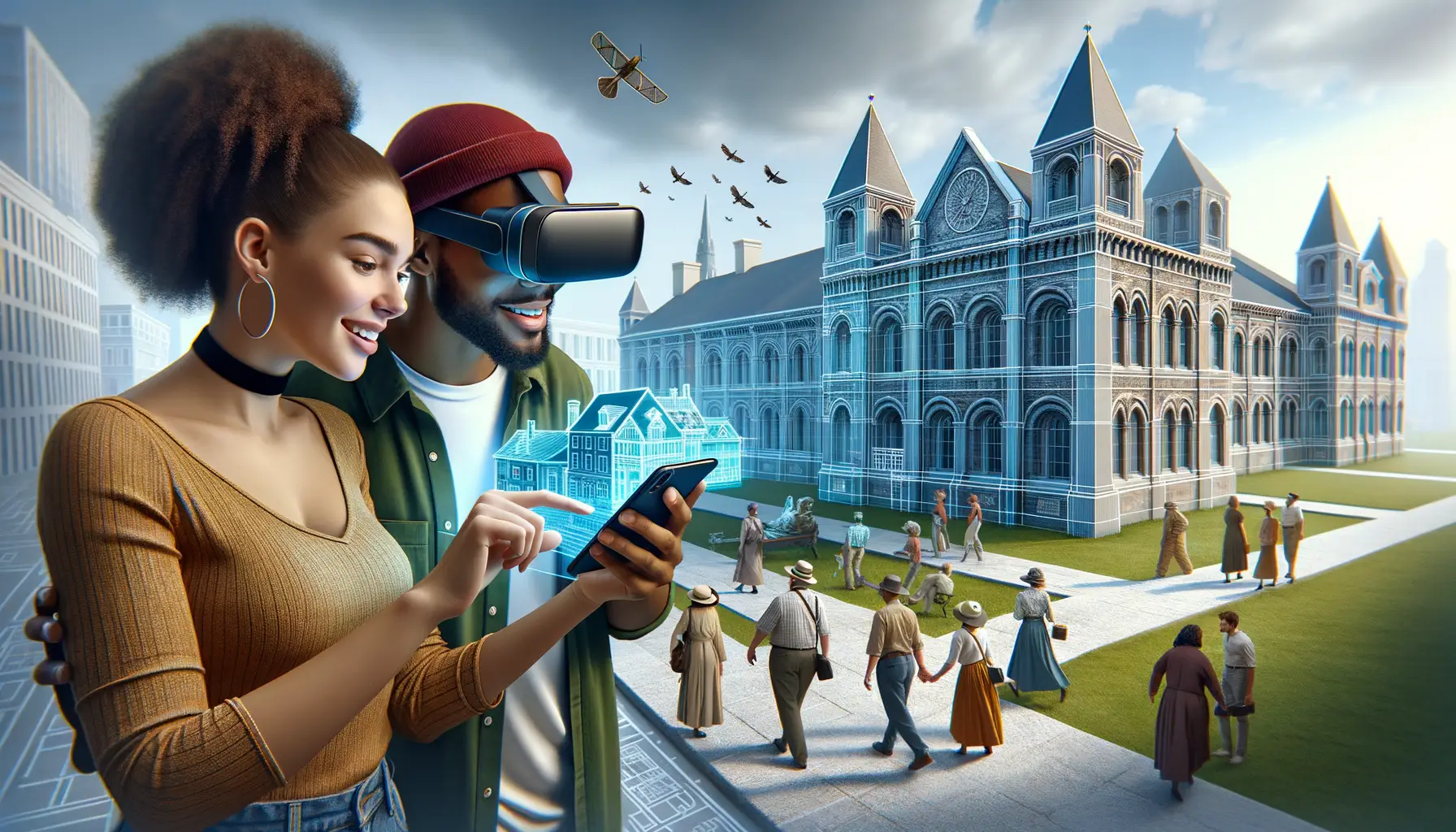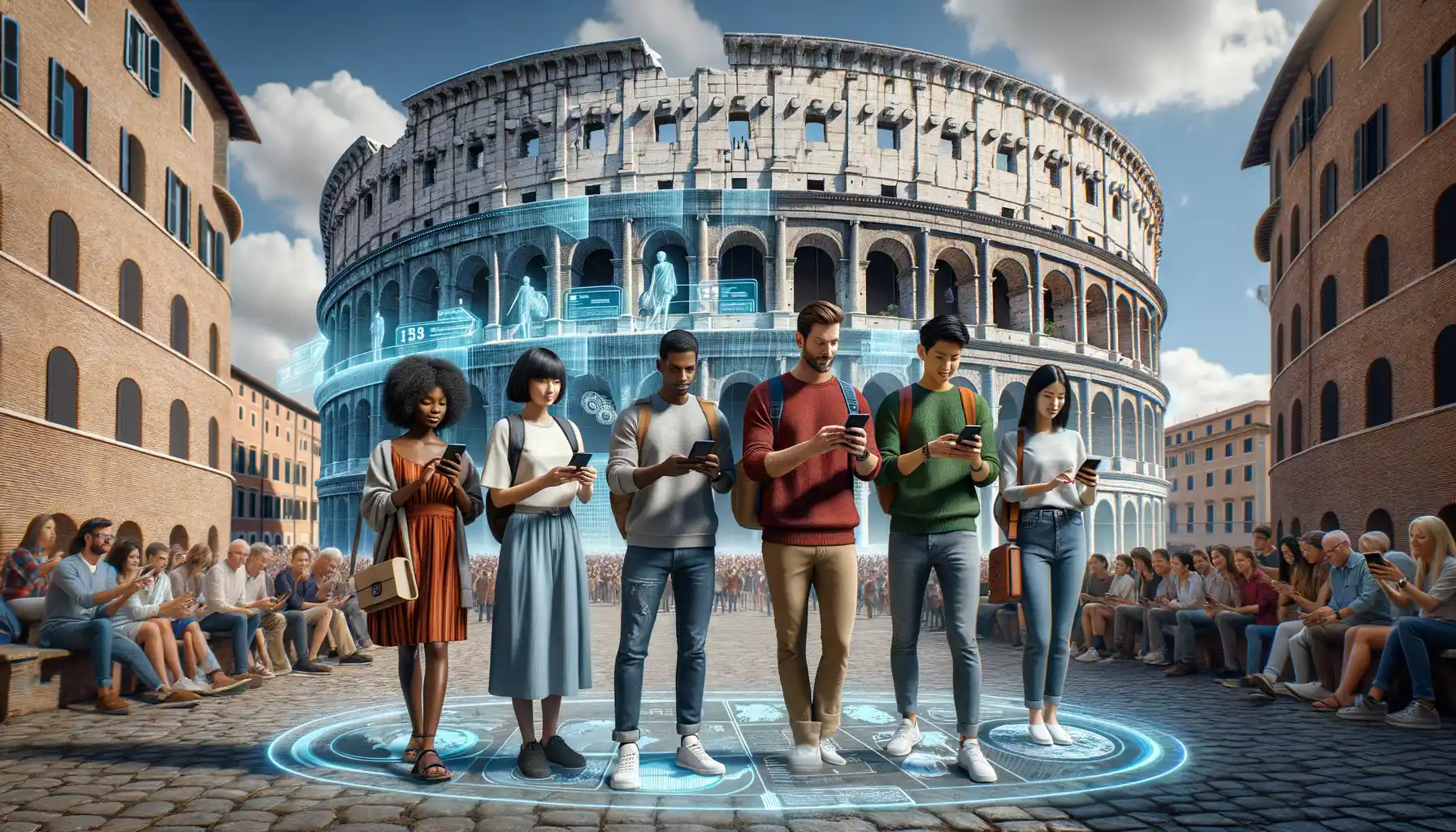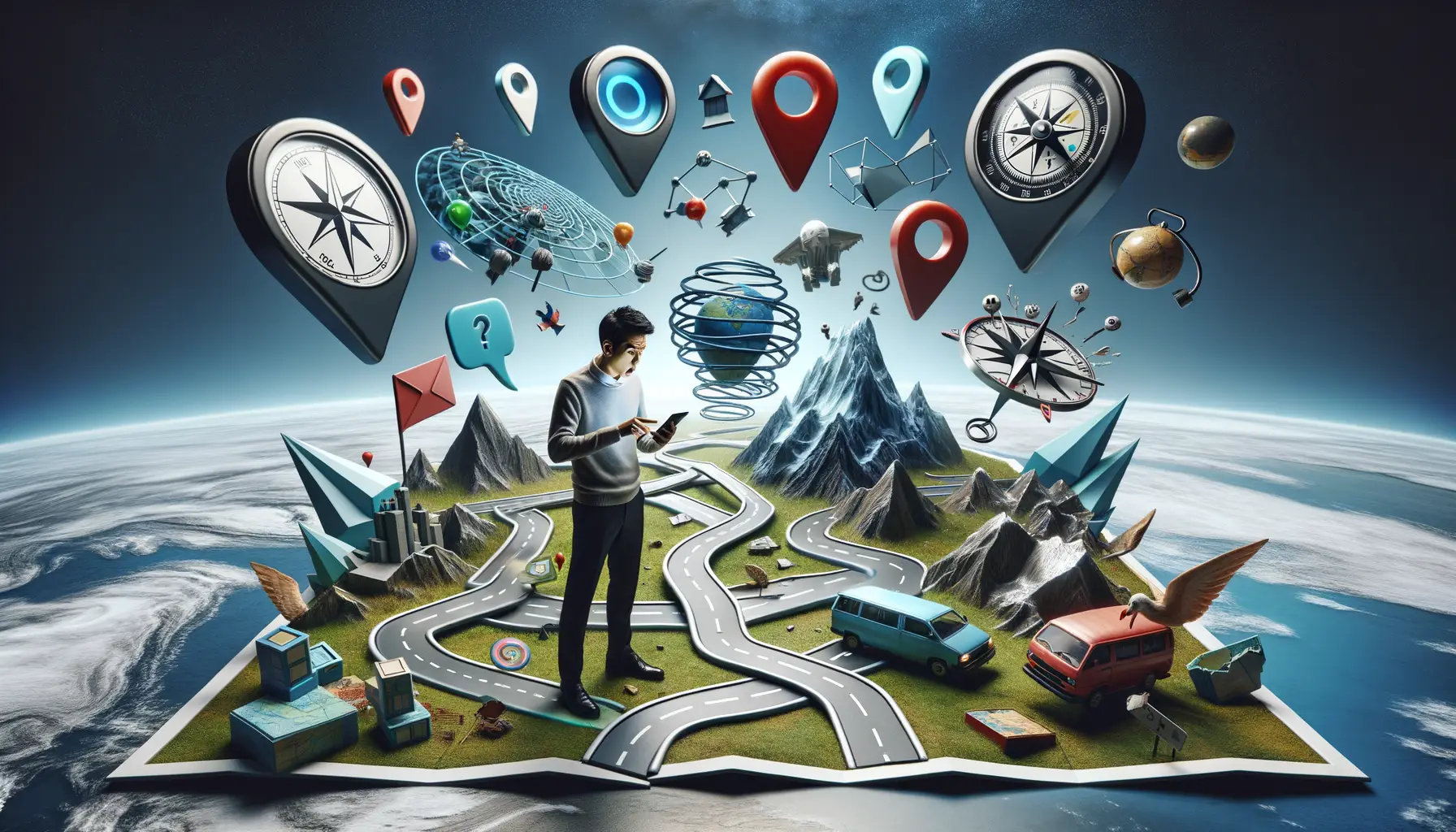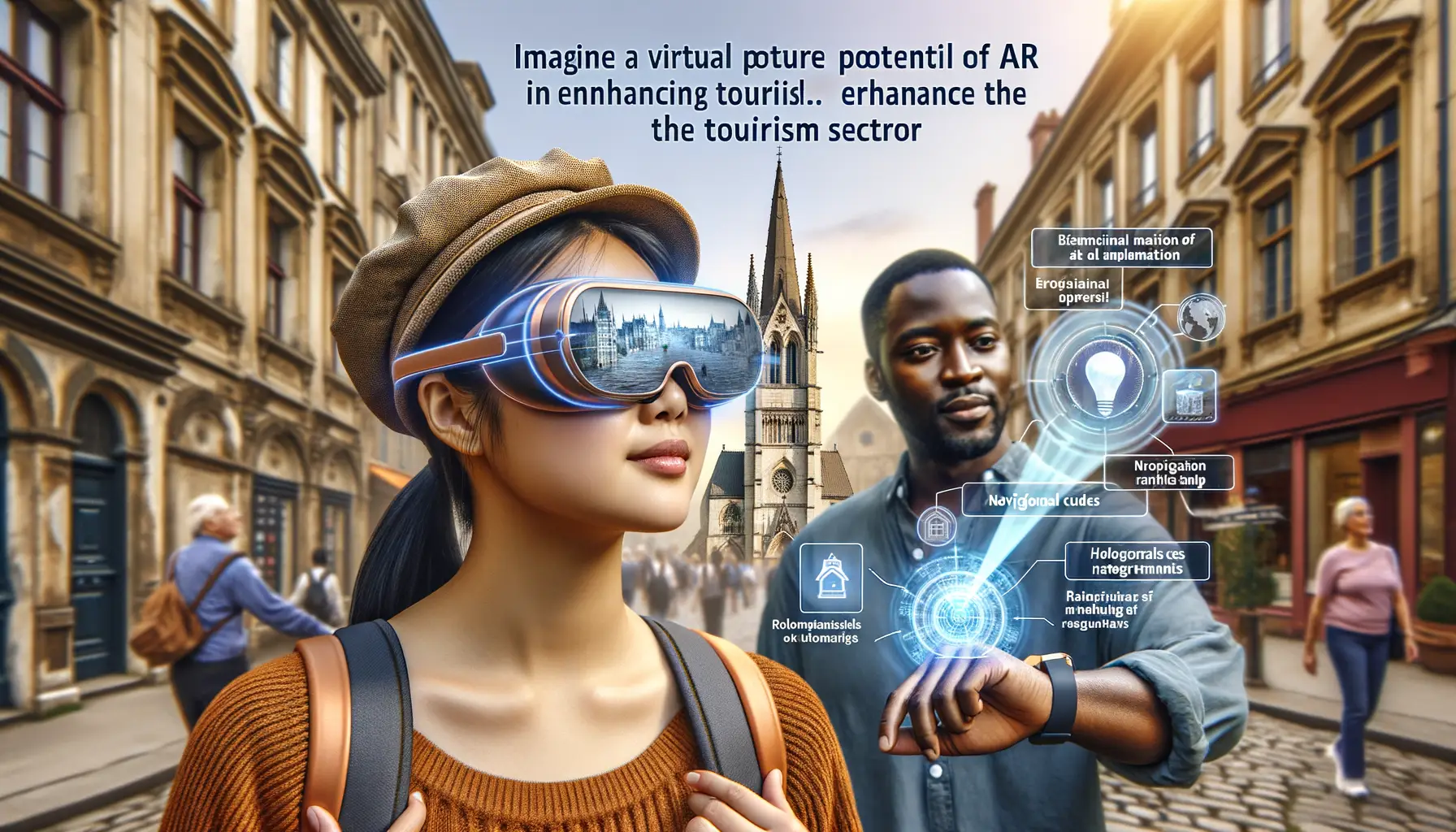Understanding Augmented Reality and Its Role in Travel
What Makes Augmented Reality a Game-Changer in Travel?
Imagine standing before the towering ruins of the Colosseum in Rome. Now picture holding up your phone and seeing the arena come alive—roaring crowds, gladiators preparing for combat, and vibrant market stalls bustling with life. This breathtaking transformation is powered by Augmented Reality (AR), and it’s changing how we connect with the world.
At its core, AR overlays our physical surroundings with digital information. Think floating descriptions above ancient sculptures or a virtual guide leading you through the labyrinthine streets of Venice. Unlike traditional maps or guidebooks, AR doesn’t just inform—it immerses, creating a bridge between past and present.
Whether it’s through smartphone apps or AR glasses, travelers can now uncover layers of history with just a tap or glance. Key benefits?
- Real-time engagement: Discover stories hidden in plain sight without leaving your spot.
- Interactive learning: Explore landmarks in 3D or simulate historic events where they happened.
By blending curiosity with cutting-edge tech, AR offers a fresh lens to view the world—less like an observer and more like a time traveler.
Benefits of Augmented Reality Maps for Exploring Historical Landmarks

Step Into the Past With Modern Magic
Imagine standing before the ruins of an ancient castle, its weathered stones whispering stories from centuries ago. Now, instead of relying solely on your imagination, you pull out your smartphone and watch as your augmented reality (AR) map breathes life into the scene. That crumbled wall? Your screen shows it as it stood in its prime, with flags fluttering from its towers. That eroded pathway? It transforms into a bustling market square, complete with merchants calling out wares in historically accurate attire.
AR maps don’t just tell history—they *immerse you in it*. The power lies in their ability to overlay the past onto your present surroundings, helping you connect deeply to landmarks with a mix of storytelling and technology. Whether you’re strolling through Athens’ Acropolis or exploring cobblestoned European squares, every step becomes a revelation.
- Interactive learning: AR facts, animations, and soundscapes help history stick like never before.
- Personalized experiences: Customize what you see based on your interests—art, battles, daily life—you name it!
- Hidden narratives revealed: Uncover overlooked details that static guidebooks can’t offer.
Bring history to life. With AR maps, exploring isn’t just sightseeing—it’s time-traveling, curiosity-fueling, and utterly unforgettable.
Examples of Augmented Reality Applications in Historical Tourism

Reliving the Past: Augmented Reality in Action
Imagine walking through a centuries-old city square, phone in hand, when suddenly, through your screen, the ghostly outline of a medieval market unfolds before you. With augmented reality (AR), this is no fantasy—it’s a treasure trove of history brought to life.
Some cultural sites have embraced this technology in ways that’ll make your jaw drop. For example, at the Colosseum in Rome, AR apps overlay roaring gladiator battles and cheering crowds over the ancient structure’s ruinous skeleton. Instead of blank stone walls, you’re transported into ancient adrenaline-fueled spectacles. Or take the Tower of London—AR reanimates historical figures like Anne Boleyn, offering an eerily authentic glimpse into Tudor England.
- Virtual reconstructions: See destroyed structures restored to their former glory, as done at Pompeii.
- Time capsules: Witness historical events unfold in real-time, from battles to royal coronations.
These aren’t just apps; they’re portals to deeply immersive storytelling. It’s like stepping into a time machine disguised as your smartphone, placing history in the palm of your hands.
Challenges and Limitations of Using AR Maps

Hidden Pitfalls of AR Maps
Using Augmented Reality (AR) maps to bring history into your hands can feel like magic, but even magic has its quirks. Imagine you’re standing before the grandeur of an ancient castle, ready to dive into its layered past, only to find your AR app struggling to load. Yes, technology has its temperamental moments.
One of the biggest hurdles? Connectivity issues. Many historical landmarks are in remote areas or built with thick stone walls that laugh in the face of modern Wi-Fi or 5G signals. Without a strong connection, that immersive experience can vanish like smoke.
Then there’s the learning curve. Not everyone is tech-savvy, and let’s be honest—figuring out some AR apps can feel like solving one of Da Vinci’s toughest riddles. The result? Frustration instead of fascination.
And for all their innovation, AR maps don’t account for sunlight blaring on your screen or your phone’s aging camera struggling to capture details. It’s progress, yes, but not without its hiccups!
Ethical and Accessibility Concerns
Beyond technical challenges, we also need to talk about accessibility. Not everyone owns a top-of-the-line smartphone capable of running AR apps smoothly. This creates a divide—technology that should unite travelers might accidentally exclude those with older devices.
Moreover, while AR maps often dazzle us with animations and overlays, they sometimes oversimplify history. A centuries-old battle summarized in two lines of text and an animated sword clash? It risks disrespecting the depth and complexity of events.
And here’s a thought: how do we ensure these digital wonders don’t make visitors forget to connect with the actual landmark? If every moment is spent staring through a screen, are we preserving history, or just pixelating it?
Future Opportunities for Augmented Reality in Tourism

Redefining Immersion: AR’s Transformational Potential
Imagine standing in the shadow of the ancient Colosseum, and with a quick glance at your phone or AR glasses, the roaring crowds of gladiator games come to life before your eyes. This isn’t just a fleeting fantasy—it’s the kind of unparalleled immersion that augmented reality promises for tomorrow’s travelers.
Picture this: an entire city acting as a living museum. With AR, you’re guided not just by directions but by stories that unfold as you move. That quaint cobblestone street? Suddenly, you’re walking alongside merchants from centuries past. The decrepit castle ruin? It transforms into its former glory, complete with flickering torches and banquets fit for royals.
Here’s what we could see:
- Interactive group experiences: Family trips turning into treasure hunts where kids “unlock” history with hidden AR clues.
- Sustainability boost: AR reconstructions offering dynamic storytelling while preserving fragile landmarks from wear and tear.
- Hyper-personalized touring: Unique routes based on your passions, whether it’s medieval architecture or forgotten poetry.
The future whispers possibilities—a seamless blend of digital and physical realms, making every trip a sensory adventure. The question isn’t if, but how soon.
An Inclusive Gateway to the World
Augmented reality could also become the ultimate travel equalizer, opening doors to those previously left behind. Think about how AR can accommodate diverse needs: travelers with limited mobility could explore virtually reconstructed areas inaccessible in real life, while real-time text translations layered over historical signs could bridge language barriers effortlessly.
For solo wanderers, AR might feel like having a wise, invisibly present guide who tailors insights just for you—no awkward group tours needed. Imagine walking into a bustling bazaar in Marrakech and learning, in your own language, the significance of each vibrant tapestry before you.
This tech isn’t just cool; it has the power to create deeper human connections with the world and its heritage. Why be a tourist when AR lets you become an explorer of time itself?
